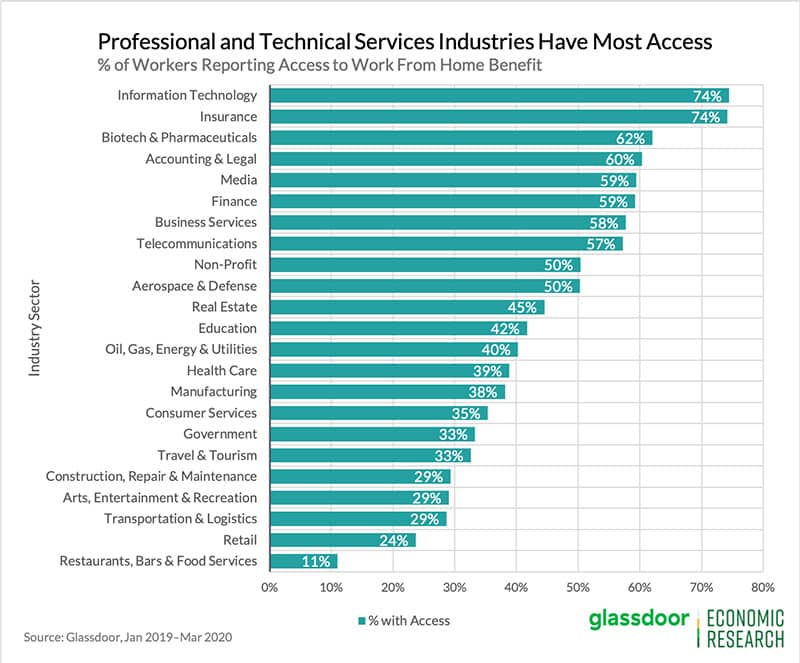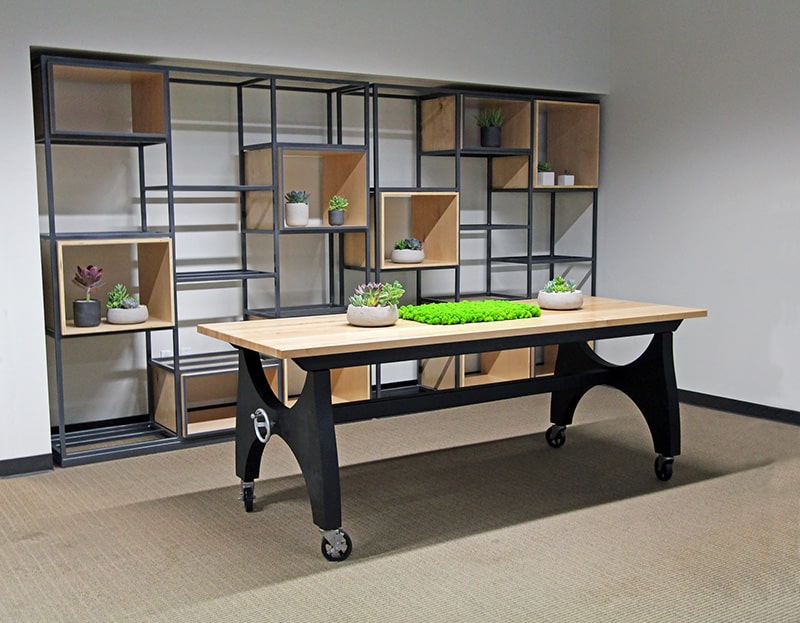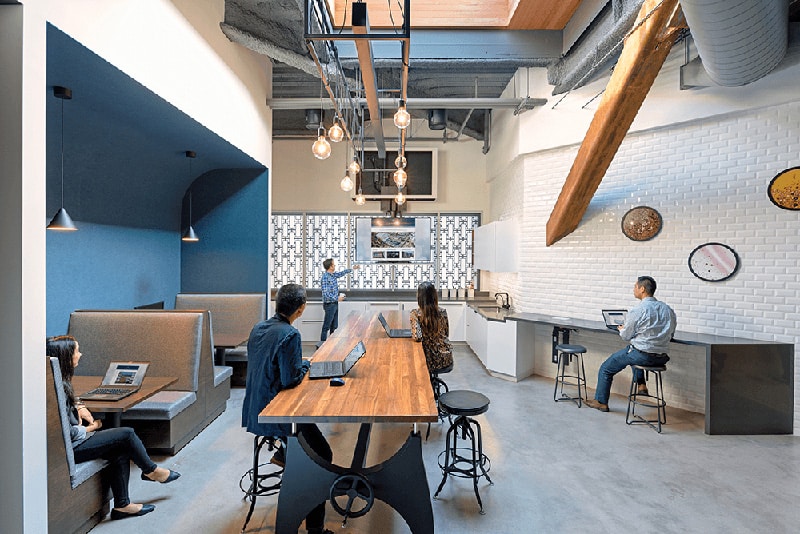Is working from home forever?
Many business leaders have been surprised by the ability of their workers to work from home due to what might be termed as extenuating circumstances.
But is it a sustainable solution over the long term?
Will you be able to grow your business this way, or is it time to return to the office as soon as it’s practicable?
We take a look at some of the issues facing managers as they cope with the downsides of working from home.

Working from Home can Derail Team Building Efforts
What’s the outlook for team building when working from home?
The answer is, “We’re about to find out.”
Thanks to an unprecedented number of employees working from home, managers are struggling to keep up with the changing social dynamics in “the office.”
Many are finding it’s much more difficult to use telecommunications tools (such as Zoom) to build the kind of cohesive, high-performing teams necessary to help the business grow and prosper.
Time-tested team building approaches, such as the famous Forming Storming Norming Performing group development model first identified by Bruce Tuckman in the mid-sixties, don’t seem to translate well to the small screen.
(Some wags have compared Zoom teleconferences to episodes of the Hollywood Squares TV game show, with each worker occupying their own little box, doing their own thing, rather than working together as a team.)
Indeed, there’s a reason we always want to communicate important information face-to-face when at all possible.
Face-to-face communication imparts crucial, nonverbal cues that don’t translate well over Zoom video conferences meetings. Without these important nonverbal cues to guide us, we are much more prone to serious misunderstandings, hurt feelings, or other unhelpful outcomes — any of which can become a roadblock to management’s efforts to build a nimble, high-performing team at work.
Employee Mentoring and Career Development Difficulties
Another well-regarded management methodology is the HP Way, created by Bill Hewlett and David Packard, eponymous founders of Hewlett-Packard.
The HP Way recognizes the need to both celebrate individual contributions as well as those of the entire team.
But when everyone is working from home, it becomes more difficult for managers to accomplish these goals.
Why?
Working from home not only makes it more difficult to work as a team, it also becomes more challenging for individuals to gain recognition for their contributions to the group.
Evaluating worker performance objectively has always been a challenge, but in many cases, working from home has revealed an uncomfortable truth: even before the Coronavirus pandemic, many managers lacked sufficient awareness of what their employees were up to.
Instead, many managers have been relying on indirect “proxy” information, such as how many hours an employee worked, if an employee was staying late (showing their diligence), or even relying on what we might euphemistically call “self-promotion” on the part of employees themselves to form an opinion of whether the worker was performing well on the job.
Misplaced as this proxy approach may have been in the past, this assessment technique is completely unsuitable for evaluating employees working from home — unless you decided to use some kind of invasive productivity / time tracking software (which most employees considered to be creepy anyway).
Mentorship and employee development is another challenge that’s made more difficult by working from home.
This has an outsized effect on younger workers.
For younger workers to develop their professional skills and advance in their careers (which helps the company grow and profit along the way), older, more experienced employees have traditionally offered important guidance to younger workers in the office.
And, in a traditional office environment, this type of informal mentorship can happen casually and informally, something that does not occur naturally when working from home.
Issues due to Unequal Access for Remote Workers
This brings us to our next concern about working from home: it creates an unequal playing field for many workers.
The transition to remote work seems to have benefited employees with the greatest level of professional experience the most. This group of workers, who are well established in their careers, don’t require much direction or supervision to accomplish their work on-line.
In fact, over the short term, many workers in this category may enjoy the “liberation” that comes from not having to support their fellow workers by answering questions etc., e.g. the same kind of informal mentoring process we talked about in the previous section.
But clearly, if the company’s most experienced workers become detached and start to act more independently from the team, it puts the company’s future in doubt. The entire team needs to progress if the company is to remain competitive and successful over time.
Job titles and industry categories are another way to categorize how working from home has been an unequal experience for many American workers.
Many so-called Knowledge Workers in Silicon Valley have found the transition to working from home relatively painless (prior to the Coronavirus pandemic, many tech workers worked from home one or more days a week). Those working with data or making calls to customers (in call centers, for example) have also found the transition relatively straightforward.
But not every job role in every industry lends itself readily to remote work.

Unequal Internet access throughout the country can also put workers at a disadvantage.
For example, many employees living in rural areas can’t successfully work from home due to poor Internet connectivity — there are many anecdotes of individuals, desperate to upload or download large files, who have resorted to driving to the parking lot of the public library to gain access to Wi-Fi networks capable of transferring work documents at reasonable speeds.
Working from home can also put a harsh spotlight on the circumstances of an individual’s home life.
With direct access to live video from someone’s living room, kitchen, or bedroom, it’s easy to make unhelpful judgments about a fellow employee’s living arrangements at home, whether it may be more affluent or one of “reduced circumstances.”
For example, it’s not uncommon for today’s younger employees to still be living at home with their parents; having mom or dad pipe up in the background with a reminder to “take out the trash!” or some other household chore really undermines one’s professional credibility.
The same goes for interruptions caused by screaming young kids in the room next door.
All of these situations remind us that going to work in the office is the great equalizer, a place where our home life is truly separate from our work life.

Working from Home Can Put Mental Health and Physical Well-Being at Risk
Speaking of work / life balance, this is another area where working from home may be worse than working in the office.
On its face, this seems counterintuitive.
Shouldn’t working from home, which allows you to take care of a young child or walk your dog during a work break, afford a greater work / life balance?
While that may be the hoped-for result, the reality of working from home can be quite different for many of us who are unable to call it quits for the day.
For these employees, working is slowly encroaching over their home life, to the point where they can’t quite seem to disengage properly, resulting in unhealthy behaviors such as waking up in the middle of the night to answer work emails.
Different personality types may be affected in different ways, but all employees could find their mental health and physical wellbeing suffering by working exclusively from home.
We’ve written before about the issues facing introverts working in an open-plan office; many introverted workers complain that the noise and distraction cause them problems with concentrating on difficult tasks
Employees with introvert tendencies may find working from home a welcome respite from the office — assuming their home environment is a quiet one (if their young children are at home, this may not be the case!).
But managers need to pay close attention, however, to identify issues with employees who have introvert tendencies, such as whether they are disconnecting or showing signs of lack of engagement with the other team members; in other words, look for signs that working from home is having a negative effect on their ability to connect with coworkers.
On the other hand, highly extroverted people may also experience difficulties from working at home.
Extroverts, who crave face-to-face social interaction with their coworkers, face the mirror image of issues facing introverts.
These employees thrive off the energy of working and being around people, whether it’s in the office or working at a busy coffee shop.
Managers need to look for signs of loneliness, social detachment, or even depression among these more socially outgoing individuals.
Bringing these employees back to the office as soon as possible, where they can interact socially with their coworkers and with clients, will help ensure your team performance reaches its true potential.

What Happens to Spontaneous Creative Collaboration?
Do you ever feel fatigued after concluding a long Zoom teleconference?
You’re not alone.
Cognitive researchers have discovered that attending an on-line meeting is quite stressful, more stressful than attending an in-person meeting.
What’s the underlying reason? It may be due to our need to maintain a much higher level of concentration during on-line meetings as our brains try to capture and interpret nonverbal cues from the other meeting participants.
This lack of easy interactivity between team members highlights one of the downsides of working from home compared to working in the office.
When it comes to creative collaboration, conducting a brainstorming session via video screen just isn’t the same — it lacks the spontaneity and creative spark comes from being in the same room together where you can bounce ideas off one another in an informal, relaxed environment.
Of course, brainstorming sessions aren’t the only activity in the office that we come to miss when it comes to creative collaboration.
Think about the many times in the past when you have serendipitously run into a colleague, met another individual at a company sales meeting, or received valuable insight from a customer visiting the office.
It’s often these chance encounters and spontaneous meetings that lead to exciting new business ideas or sales opportunities, something that doesn’t happen as easily when working from home.

WFH Increases IT Security Risks and Duplicates Support Costs
The sudden growth of employees working from home has also posed major challenges for IT departments that are traditionally accustomed to maintaining very tight control over the computer systems used by their employees.
For these IT departments, maintaining control over an individual employee’s work computer or smartphone is a prudent response to the increasing number of cyber-attacks against corporate networks around the world — it does not qualify them as “control freaks” (although many IT employees have probably been called that – and worse – over the years!).
For IT security professionals, the idea of employees working from home is a nightmare scenario.
Home computers are often used by multiple family members, who may or may not practice good computer security hygiene, such as protecting passwords or installing unapproved apps that could present a risk to important corporate data.
Even if the employee working from home only uses a work-issued computer or smartphone and accesses the computer network via a VPN, the mere presence of other computers on the home network increases the risk of a cyber intrusion.
The bottom line is that working from home poses an unprecedented challenge for IT departments.
Rather than being responsible for a controlled environment (with a limited number of configurations on the network), IT support teams now must provide support for each individual’s computing environment at home, all the while incurring the risk that any of these different configurations could result in a point of failure – and a security breach that spreads across the whole corporate network.
The cost of supporting employees at home in that manner is one of the reasons that many facility planners have realized that employees working in the office may be the same cost (or cheaper) — even when real estate costs are figured in — than working from home.

Formaspace Contract can help Your Employees Get Back to Work
Now is the time to make changes in the office.
Make your office safer and more welcoming as your workers return on site.
Not sure how to take the next step?
Your Formaspace Contract Rep can help. Give them a call today.
They can show you our latest solutions for protecting workers on the job while improving productivity as your employees return to the office.









